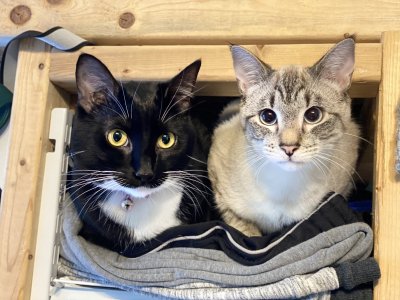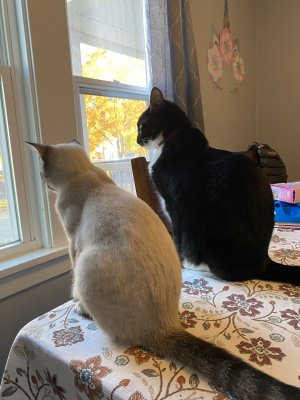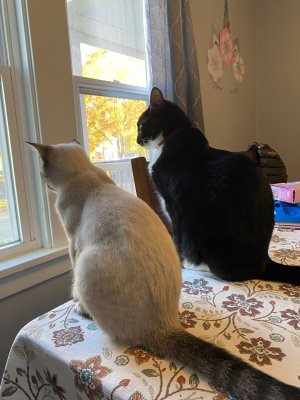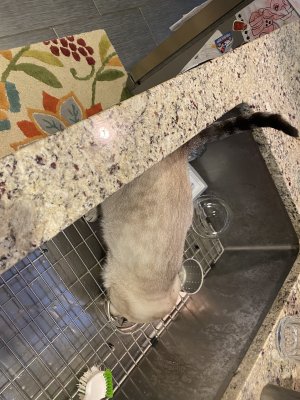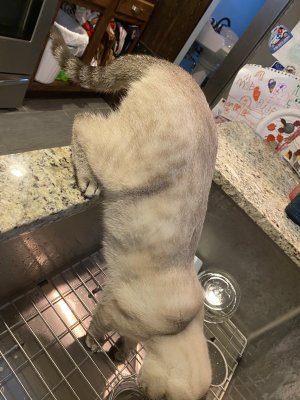Hi,
We adopted this kitty when he was about 4 months old (September). He looks like a Siamese lynx point, but also a Desert Lynx. He matches the personality description of the Desert Lynx perfectly. He has really faint/muted spots and stripes on his back legs. I was hoping the second picture would show it better. The rescue said he was larger for his age. Thank you for your help!
We adopted this kitty when he was about 4 months old (September). He looks like a Siamese lynx point, but also a Desert Lynx. He matches the personality description of the Desert Lynx perfectly. He has really faint/muted spots and stripes on his back legs. I was hoping the second picture would show it better. The rescue said he was larger for his age. Thank you for your help!
Attachments
-
2.7 MB Views: 195
-
1.7 MB Views: 195
-
1.7 MB Views: 203

